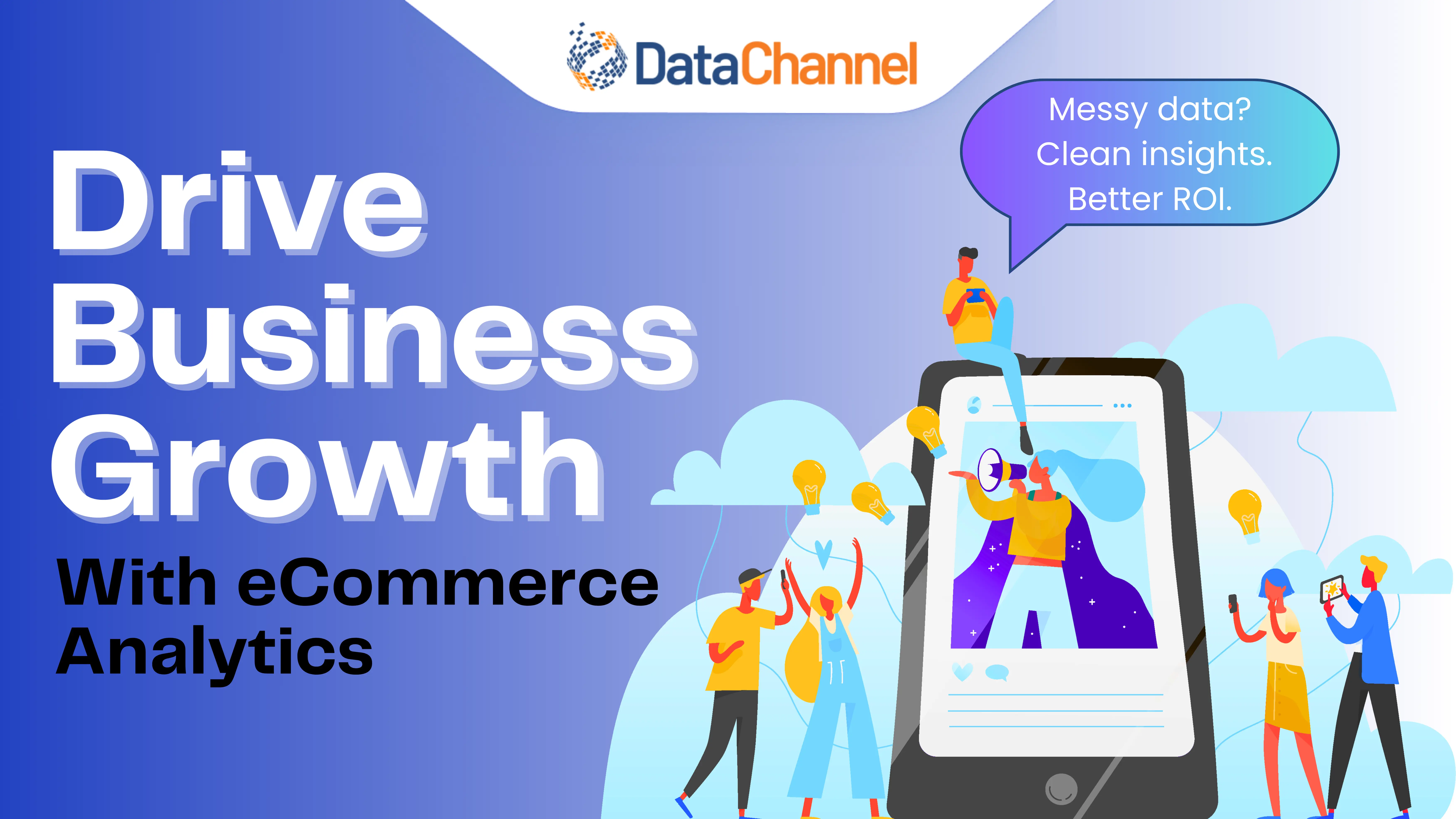
Integrate Multiple API & Data Sources Into One Platform
Every organization, regardless of how big or experienced it is, has faced or is facing issues in creating an effective data management system across different channel platforms that somewhat restricts their growth in the competitive business world.
To beat the situation, organizations can opt for a cloud-based integration or SaaS (software as a service) platform to access all crucial data in real-time and make decisions that will help their business to thrive. With an effective data management system by your side, you can easily break down the data silos, enhance visibility & connectivity, and ultimately optimize business processes.
How does data integration help?
Data Integration is a process of collecting data from different sources to a common cloud-based platform for its easy access from anywhere and at any time. With an excellent data integration solution in place, organizations can have real-time access to crucial insights that help them better plan their growth strategies and improve decision-making processes.
The process of data integration provides numerous benefits to a business, and some of them are as follows:
- Streamline Operations: Real-time access to data related to overall processes help businesses to increase production, maintain costs and eliminate errors across various departments.
- Improvise Customer Experience: The presence of data on a shared & common platform provides an accurate view of customers and how they impact sales and revenue. The real-time availability of historical data and customer information helps businesses to target the right customers at just the right time.
- Better Decision-making: The real-time access to data provides information in relation to the latest trends and other essential information necessary for making better decisions for business growth.
- Future Predictions: With the availability of historical data and current data, the demands of customers in the future can be anticipated. This will help businesses upgrade their products and services, so you can stay ahead of the competition.
What are API Connectors?
An API (Application Programming Interface) is a specific set of rules and protocols which the software programs follow to maintain effective communication with each other and with back-end systems.
The connectors are the ones that are connected with the APIs to pass the data from one message processor to another to maintain a seamless data streaming. Connectors within the integration area are categorized on the basis of the system they are connected with or the protocol that they support.
There are numerous types of Marketing API Connectors available that help in creating a channel of information for organizations and help them to effectively sell their products and services online. The integration of data through different APIs on a single platform allows businesses to carry their processes with ease and improve customer experience.
Here, we are listing down some of the widely used APIs connectors:
- Google Ads: The Google Ads API allows developers to build applications that can directly interact with the Google Ads Server. The Data integration to Google ads provides businesses with a broad image of the marketing and sales data that helps them to easily manage the critical Google Ads campaigns and accounts.
- Facebook Ads: This API allows you to build applications that help you to advertise your products on one of the biggest social media platforms – Facebook. Data Integration to Facebook Ads data assists by providing secure access to multiple fragmented Facebook Ads statics and real-time activity measurement.
- Google Analytics: The API provides a method to easily access report data in Google Analytics. Data Integration to Google Analytics will help you to perform ROI analysis and compare the performance of campaigns for all your marketing and advertising investments. With this API integration, you can save considerable time and effort.
- Google DoubleClick Manager: Data Integration to Google DoubleClick Manager helps you to manage and monitor all your online advertisements without any constraint. The Google DoubleClick Manager API connector simplifies various processes like planning, targeting, trafficking, optimizing, and reporting and facilitates smooth and effective campaign management.
- Bing Ads: Integration of Bing Ads allows you to bring all the data of your bing ads under one common platform that facilitates an effortless analyzing, categorizing, and visualizing of ads.
- Salesforce: Salesforce API data integration reduces the need for data entry, eliminates human error, connects your Salesforce to a multitude of different solutions, and provides multiple other benefits to sales operation.
- Facebook Insights: Data Integration to Facebook Insights help you to track your brand performance and provide updates on all your past as well as present reports, brand reach, and customer engagement statistics.
- Google Display & Video 360 Data: Integrate other solutions with Google Display & Video 360 Data and connect your data and information across multiple products and boost productivity for better results.
- Yahoo Gemini: The Yahoo Gemini API Connector brings native ads and mobile search together that help advertisers to manage their campaigns more efficiently. With Yahoo Gemini Data Integration, you can have all your crucial data under one safe data warehouse.
- Linkedin Ads: Linkedin Ads Data Integration will allow you to analyze your advertisement data, so advertisement productivity can be increased, and better marketing solutions can be developed.
- MailChimp: Data Integration to MailChimp helps you to develop custom solutions for your business that will help your business grow rapidly.

How Does an API Work?
APIs usually comprises the following parties:
- Web-based, API-enabled application
- Precise data request
- Remote server
- Returned data/function
APIs act as a regulated wrapper to assist your API-enabled applications in seamlessly communicating with on-line servers to create data requests.
With Datachannel, you can connect as well as integrate different APIs with any business application and also get the flexibility to:
- Create your own API or choose from a library of shared connections and get started in minutes.
- Sync the APIs with your business applications such as E-commerce, ERP, CRM, and other marketing applications to increase efficiency.
- Graphically map the APIs to any other data format within a few minutes.
- Sync accounts and custom objects with different accounting systems like QuickBooks, Xero, and others.
- Sync your accounts and other important data with NetSuite ERP.
- Sync the required data with third-party APIs.
How to choose an ideal data integration solution for your business:
It is a fact that the availability of data from all the platforms in a common space has helped businesses improve their business processes, reduce costs, increase productivity, generate better revenue, and achieve higher levels of customer satisfaction.
All things mentioned above are enough to reason the increasing demand for a comprehensive data integration solution. The right solution will assist businesses in consolidating data from multiple sources and dig out the variable insights from them. Choosing an effective Data integration solution is crucial to ensure the growth of your business in the long run.
To get the best one, here are some factors you to consider:
Select the one which suits your Analysis Purposes
Choose a tool that offers multiple functions such as analyzing, reporting, predictive analysis, among a few others. Diverse businesses have different needs based on their processing computing models, data access methods, and algorithm support. Select a cloud-based data warehouse that will meet your specific needs and also provide flexibility in services, so you can focus more on analysis and results.
Consider the Cost
Different organizations that vary in size have different tolerance for different kinds of costs. Therefore, a cost model is required to conclude whether it is essential to use the cloud data warehouse or not. The cost of the data integration tool may include the following costs:
- Procurement Cost: For purchase of hardware, storage, software, and network communication devices;
- Deployment Cost: For project planning, project management, system design, development, configuration, testing, and implementation;
- Data Development and Management Costs: For design and development of data extraction and integration applications and data warehouse models;
- Business Opportunity Cost: For decreasing the impact of system release delay on services;
- O&M Cost: For data center power supply, data center space, and operator network maintenance;
- Daily Cost: For system upgrades, software license maintenance, data backup/recovery, data archiving, and disaster planning;
Multiple Deployment Options
The data integration platform you are investing in must support your operating environments both on-premises and on-cloud. The platform should also support virtualized servers and distributed processing environments across a variety of operating systems. The below-mentioned add on-features can also help in enhancing developer’s productivity:
- self-generating documentation with graphical representations of workflows;
- parallelization of integration processes and data loading
- data profiling tools to analyze the information in sources and targets;
- data quality tools to cleanse and enhance data; and
- integration with other vendors’ software development, management, scheduling and monitoring tools;
Ease in Utilization
The data integration tool, along with integrating data, should also make it market-ready with sound analysis. It should have a friendly interface so that the users can configure, manage and utilize their data without requiring any tech intervention.
After-Sale Support for the Software Platform
Ensure that the vendor from whom you are buying the data integration tool will provide long-term support in the form of online assistance for common Q &A, on-site assistance, online chats, and in-person discussions.
Benefits of API-Integration:
API-integrations are becoming more and more popular in the business world as it allows organizations to share and exchange data hassle-freely. Multiple APIs integration allows you to automate various tasks to boost productivity, eliminate chances of errors, and ensure better outcomes. This also provides a few other benefits like:
- Ability to connect to cloud apps
- Value extraction from existing and legacy data systems
- Possibility to create new APIs
- Future-proofing enterprise integration
- Activating data by using reverse ETL
Every business, by creating APIs for its business applications, can improve its performance. APIs have diverse uses for all kinds of businesses.
Advantages of Choosing DataChannel
- 100+ Data Sources: We support trending and established data sources related to advertising, marketing, CRM, financial, and eCommerce platforms, along with support for ad-hoc files, google sheets, cloud storage, relational databases and ingestion of real-time data using webhooks. If we do not have the integration you need, reach out to our team and we will build it for you for free.
- Powerful scheduling and orchestration: our fully automated platform follows all ETL best practices and deploys granular control over scheduling down to the exact minute.
- Granular control over what data to move: Unlike most tools which are highly opinionated and dictate what data they would move, we allow you the ability to choose down to field level what data you need. If you need to add another dimension or metric down the line, our easy-to-use UI lets you do that in a single click without any breaking changes to your downstream process.
- Reliable pipelines: We offer extensive logging, fault tolerance, and automated recovery, allowing for dependable and reliable ETL pipelines. If we are unable to recover, the extensive notifications will alert you via slack, app, and email for taking appropriate action.
- Built to scale at an affordable cost: Our best in class ETL tool is built to handle billions of rows of data and will scale with your business when you need them to, while allowing you to only pay for what you use today.
- Get Started within Minutes: We offer a self-serve UI, and our onboarding experts are always there to help you through the process.
- Managed Data Warehouse: While cloud-first data warehouses offer immense flexibility and opportunity, managing them can be a hassle without the right team and resources. If you do not want the trouble of managing them in-house, use our managed warehouse offering and get started today. Whenever you feel you are ready to do it in-house, simply configure your own warehouse and direct pipelines to it.
- Activate your data with Reverse ETL: The unidimensional approach toward data management (movement from apps to warehouses) is evolving constantly. Now you can use DataChannel’s reverse ETL capabilities to send data to the tools your business teams use every day. Set up alerts & notifications on top of your data warehouse and sync customer data across all platforms, converting your data warehouse into a powerful CDP (Customer Data Platform). You can even preview the data without ever leaving the platform.
.png)
Try DataChannel Free for 14 days










